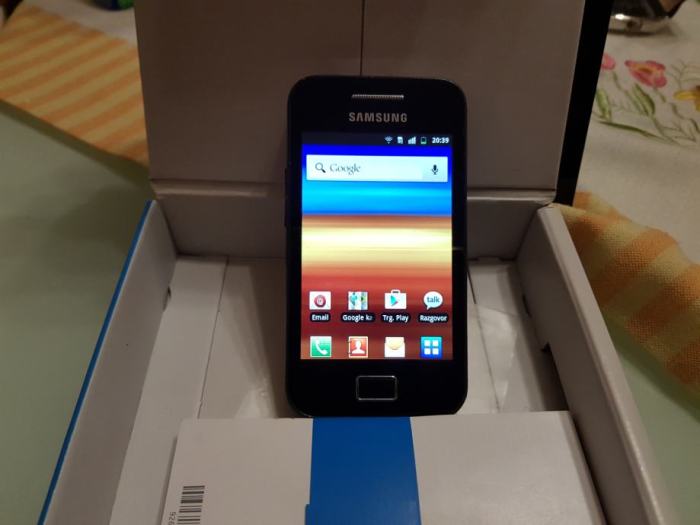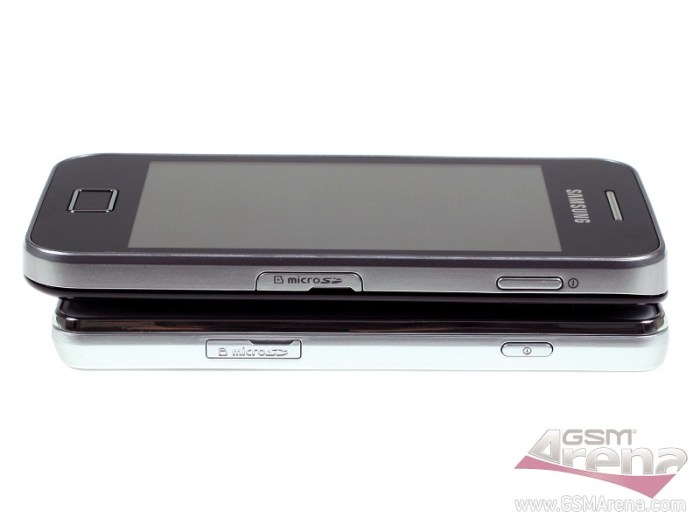Samsung Galaxy Ace 8530i Specification
Samsung Galaxy Ace 8530i: A Retrospective Look
Samsung galaxy ace 8530i specification – The Samsung Galaxy Ace 8530i, released in 2012, represented a significant step in the evolution of budget-friendly smartphones. While not a flagship device, it offered a compelling package of features for its time, catering to users seeking a reliable and affordable mobile experience. This article delves into the specifications and features of this notable device.
Device Overview
The Samsung Galaxy Ace 8530i presented a compact and relatively lightweight design. Its construction primarily utilized plastic, a common material for budget smartphones of that era. The phone’s dimensions and weight contributed to its pocketability and ease of one-handed use.
- Dimensions: Approximately 112.4 x 59.9 x 11.5 mm
- Weight: Approximately 113 grams
- Material: Primarily plastic
- Form Factor: Candybar
- Build Quality: Solid for its price point
Display Specifications
The Galaxy Ace 8530i featured a relatively small display compared to modern standards, but it was adequate for its time. The screen technology and resolution offered acceptable visual clarity for everyday tasks.
Screen Size: 3.5 inches
Resolution: 320 x 480 pixels
Technology: TFT capacitive touchscreen
Color Depth: 16 million colors
Pixel Density: Approximately 165 ppi
| Feature | Galaxy Ace 8530i | HTC Wildfire S | Sony Xperia Mini Pro |
|---|---|---|---|
| Screen Size | 3.5 inches | 3.2 inches | 2.55 inches |
| Resolution | 320 x 480 pixels | HVGA (480 x 320) | QVGA (320 x 240) |
| Technology | TFT | TFT | TFT |
| Pixel Density | ~165 ppi | ~180 ppi | ~149 ppi |
Hardware and Performance
The Galaxy Ace 8530i’s internal specifications reflected its budget-friendly nature. While not a powerhouse, the processor and RAM provided sufficient performance for basic applications and multitasking.
Processor: 832 MHz single-core processor
RAM: 512 MB
Internal Storage: 3 GB (expandable via microSD)
The phone’s graphics processing capabilities were modest, suitable for casual gaming and media playback. Compared to high-end smartphones of the time, it lagged in processing power, but it was sufficient for its intended use case.
Camera Features

Source: njuskalo.hr
The Galaxy Ace 8530i incorporated a rear-facing camera and a front-facing camera, both with relatively low resolutions. Video recording capabilities were also limited by the hardware.
Rear Camera: 5 MP
Front Camera: VGA (0.3 MP)
Video Recording: Yes, but at lower resolutions.
- Compared to the HTC Wildfire S (5MP rear camera), the image quality was comparable, though video capabilities were likely inferior.
- Compared to the Nokia Lumia 610 (5MP rear camera), the image quality was likely similar in terms of resolution, but the Lumia 610 might have offered better image processing.
Software and Connectivity

Source: ebayimg.com
The Samsung Galaxy Ace 8530i ran on Android, providing access to a wide range of applications through the Google Play Store. Its connectivity options were standard for its era.
Operating System: Android 2.3 (Gingerbread)
Connectivity: Wi-Fi, Bluetooth 3.0, GSM/UMTS cellular network support
Sensors included an accelerometer and proximity sensor for basic functionality.
Battery Life and Charging
The battery capacity was modest, offering decent but not exceptional battery life. Charging technology was standard for the time, without any fast-charging capabilities.
Battery Capacity: 1300 mAh
Talk Time/Standby Time: Varied depending on usage.
Understanding the Samsung Galaxy Ace 8530i specification often leads to comparisons with its successor models. For a detailed look at a similar device, you might find the specifications for the improved Samsung Galaxy Ace 2 GT-I8160 helpful; check out the specifications here: samsung galaxy ace 2 gt 18160 specification. Returning to the Ace 8530i, its specifications, while less advanced, still offer insight into Samsung’s early Android offerings.
Compared to competitors like the HTC Wildfire S (1500 mAh battery), the battery life was likely slightly shorter, but still within the acceptable range for a device of its class.
Multimedia Capabilities
The Galaxy Ace 8530i provided basic multimedia capabilities, suitable for listening to music and watching videos. Audio output was through a standard 3.5mm headphone jack and a built-in speaker.
- Audio Jack: 3.5mm
- Supported Audio Formats: MP3, WAV, AAC, etc. (common formats of the time)
- Supported Video Formats: MP4, 3GP, etc. (common formats of the time)
- Speaker Quality: Adequate for basic audio playback.
Illustrative Description of the Device
The Samsung Galaxy Ace 8530i presented a simple, understated design. Its plastic casing, while not premium, felt durable enough for everyday use. The phone’s relatively small size made it comfortable to hold and operate with one hand. The user interface was clean and intuitive, reflecting the standard Android Gingerbread experience. The overall aesthetic was functional rather than stylish, reflecting its budget-oriented nature.
Technical Specifications Table, Samsung galaxy ace 8530i specification

Source: gsmarena.com
| Specification | Value | Units |
|---|---|---|
| Processor | 832 MHz single-core | – |
| RAM | 512 MB | MB |
| Internal Storage | 3 GB | GB |
| Display Size | 3.5 | inches |
| Display Resolution | 320 x 480 | pixels |
| Rear Camera | 5 | MP |
| Front Camera | 0.3 | MP |
| Battery Capacity | 1300 | mAh |
| Operating System | Android 2.3 (Gingerbread) | – |
Common Queries: Samsung Galaxy Ace 8530i Specification
Was the Samsung Galaxy Ace 8530i a popular phone?
Yes, it was popular in its time, particularly among budget-conscious consumers seeking a basic smartphone with decent functionality.
Did it receive any major software updates?
Likely received a few updates shortly after release, but major OS upgrades were unlikely given its budget nature and age.
How does its battery life compare to modern smartphones?
Its battery life would be significantly shorter than modern smartphones due to advancements in battery technology and power efficiency.
Are replacement parts still readily available?
Finding replacement parts may be challenging due to its age and discontinued status. Online marketplaces might offer some options.





















